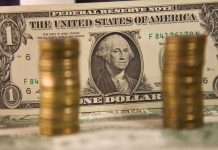German producer prices rose 1.5% MoM in May and 7.2% from a year earlier
The euro managed to stage a bounce from fresh mid-April lows seen around 1.1885 earlier on Friday to get back above the 1.1900 figure during the European hours. The dollar remains on the offensive but the upside momentum has been slowing as traders have already digested a hawkish tone from the Federal Reserve.
Despite the latest bounce, the common currency remains vulnerable to fresh losses in the short term. On the data front, German producer prices rose 1.5% MoM in May and 7.2% from a year earlier. In the Eurozone, the current account surplus widened a tad to 31,4 billion euros from 30,0 billion euros. The data somehow helped ease the selling pressure surrounding the euro.
Earlier in the day, the USD index advanced to fresh two-month highs beyond the 92.00 figure before easing slightly as the US 10-year yields appear side-lined around 1.50%, struggling to extend the ascent as the positive momentum from the Fed’s meeting started to fade.
Still, the dollar will likely stay on the offensive in the short term as traders started to bet on rising interest rates earlier than expected in order to prevent overheating of the US economy amid rising inflation.
As such, the euro will likely struggle to regain the 1.2000 figure in the coming days while the overall bullish trend remains intact. On the weekly charts, the pair is now below the 20-week simple moving average, suffering losses for the third week in a row. However, only a break below 1.1700 would derail a broader uptrend from May 2020.
In the immediate term, EURUSD needs to confirm a recovery above 1.1900 in order to retarget the 200-DMA that arrives at 1.1990, followed by the 100-DMA (today at 1.2035) and the descending 20-DMA in the 1.2140 region.



























